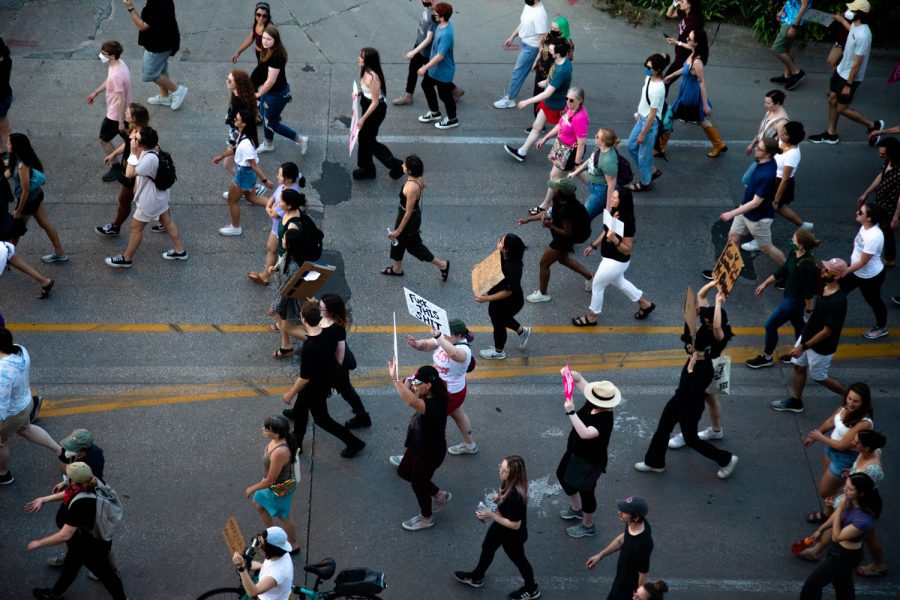Opinion | Fight for rights, don’t fight each other
Protests have seen a spill over into violence. This needs to stop.
Protesters hold signs and chant at a pro-abortion rights march through downtown Iowa City on Friday, June 24, 2022.
July 14, 2022
The overturn of Roe v. Wade, instances of police brutality, and the Russia-Ukraine War have sparked protests in recent years.
In the midst of protests, most peaceful, some have become more violent with protesters committing crimes.
Protests should not only be peaceful, but people on all sides should not invoke other crimes, such as death threats, because it limits their side of the argument.
On June 24, the U.S. Supreme Court overturned Roe v. Wade, citing that abortion was not implicity protected by the Constitution. Thus, laws regarding abortion should be up to the states.
People are understandably upset by the Supreme Court ruling and are advocating their voices on the matter. As states have gained the power to decide whether abortion should be legal or not, there is a need for protests to continue to push for abortion rights from state legislators.
The Armed Conflict Location & Event Data Project collects data on political violence and protests from around the world. The ACLED created an ongoing mapping project to show the data on peaceful protests relating to connected violence. The data showed that violence was often retaliation from people driving cars into protesters, on the other side of the argument. The data also showed that a small percentage of protests turned into riots, and often was unrelated to the cause it was trying to push.
Both acts of violence, as forms of protest, made each argument seem more radical than it was.
For example, the idea that police should be funded more could still include accountability. On the other side of the argument, the Black Lives Matter movement does not entail that other lives matter less, because it is trying to save lives from police brutality.
The 2020s are not the first to have this conflict between peaceful and violent forms of protests.
Even before the U.S. was a country, people have been using protests as a way to inspire and enact change, such as the Boston Tea Party in 1773, being mostly peaceful.
In the 1960s, the civil rights movement was much more impactful with peaceful protests and actions than counterpart movements that used violence more often.
Protests are one of the best ways to show the government that something matters to you, however, your points can be brought down by actions outside of protesting.
There have been multiple instances in the past few years of protests turning into riots. This number is small in comparison to the total number of protests, but still impacted the outside opinions on them.
When protests are built on the backbone of change, rather than hate, they are more easily built to be truly peaceful.
People from all political backgrounds and beliefs must stop acting like the opposing side is barbaric. Knowledge and understanding of multiple sides of an argument can better build the laws and lives of our country.
In the end, people should be vocal about the issues they care about. Get out and protest, so your voices can be heard loud and clear. But once you bring in violence, or once you allow your passion to turn into an uncontrolled rage, you lose the value and purpose of why you are protesting in the first place.
Columns reflect the opinions of the authors and are not necessarily those of the Editorial Board, The Daily Iowan, or other organizations in which the author may be involved.



